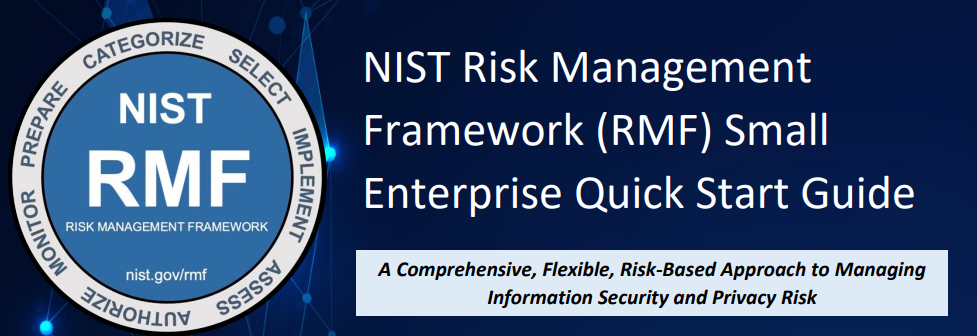
Understanding the NIST Risk Management Framework (RMF) and the Small Enterprise Quick Start Guide
The National Institute of Standards and Technology (NIST) Risk Management Framework (RMF) is a structured approach designed to integrate information security and risk management into an organization's overall strategic planning and business processes. While RMF is comprehensive and detailed, it can be challenging to implement for smaller companies with limitted resources. To address this, NIST released the NIST RMF Small Enterprise Quick Start Guide in July 2024.
Purpose of the Small Enterprise Quick Start Guide
For organizations of all sizes, managing risk—including information security and privacy risk—is critical for organizational resilience. The Small Enterprise Quick Start Guide is designed to help small, under-resourced entities understand the value and core components of the NIST RMF. It provides a starting point for designing and implementing an information security and privacy risk management program. This document is not intended to replace the RMF; instead, it serves as an introductory guide to help organizations get started.
Key Components of the Quick Start Guide
- Simplified Framework Overview: The guide breaks down the RMF into more manageable sections, making it easier for smaller companies to understand and implement the core principles.
- Prioritized Actions: It highlights the most critical actions that small enterprises should take first, ensuring that they can begin to protect their information systems without becoming overwhelmed.
- Resource Allocation: The guide provides tips on how to allocate limited resources effectively, ensuring that even companies with minimal budgets can make meaningful progress in their risk management efforts.
- Documentation Guidance: Recognizing that extensive documentation can be a barrier, the guide offers streamlined documentation processes that fit the capabilities of smaller teams.
- Continuous Monitoring Strategies: It includes practical strategies for maintaining continuous monitoring of security controls, adapted to the scale and resources of small enterprises.
Why the Quick Start Guide is Important for Small Companies
- Resource Efficiency: The guide helps small companies maximize the impact of their limited resources by focusing on the most critical aspects of the RMF.
- Ease of Implementation: By simplifying the RMF processes and providing clear, step-by-step instructions, the guide makes it easier for small enterprises to get started with risk management.
- Enhanced Security: Even partial implementation of the RMF, as guided by this document, can significantly enhance a small company's security posture, protecting against unauthorized access, use, disclosure, disruption, modification, or destruction of information.
- Organizational Resilience: Implementing the RMF principles helps small enterprises build resilience against cyber threats, ensuring long-term sustainability and success.
In conclusion, the NIST RMF Small Enterprise Quick Start Guide provides a practical and accessible introduction to the RMF, enabling smaller organizations to begin their journey toward robust information security and privacy risk management.
